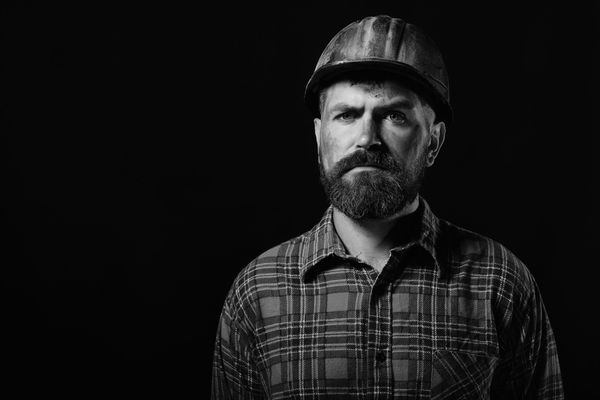A hairy question: Should have beards in the workplace?
BELOVED by hipsters and history professors alike, beards are adored by some and hated by others – but can you ban them from your workplace?
While it might seem a trivial question to some, at least two recent cases have shown that some employees believe wearing a beard is worth taking their bosses to court.
Such was the case for James Felton, a goatee-sporting underground truck driver working at BHP Billiton’s Olympic Dam uranium mine in the north of South Australia (James Felton v BHP Billiton (2015)).
Mr Felton was dismissed on the basis of his repeated refusal to follow a company direction to present to work clean-shaven, in accordance with a policy that the company was applying more rigorously in 2014.
Since he had started with the company six years prior, Mr Felton had sported a goatee beard of about 100mm in length and a moustache, which the Fair Work Commission heard he considered as a personal attribute.
Safety concern
BHP Billiton had asked him to shave so that it could conduct a respirator fit test for personal protective equipment (PPE) being introduced to prevent exposure to potentially dangerous dusts.
The presence of facial hair meant the respirator masks could not secure a good fit against the skin – rendering them useless.
After repeated refusals, he was dismissed from his role and not required to work out his notice, with the company saying his decision was a breach of its code of conduct and contract of employment.
In court, Mr Felton argued he had been unfairly dismissed, saying that the company had not consulted effectively, and that he had offered to purchase different PPE that would allow him to retain his beard.
But Fair Work Commissioner Peter Hampton said that any failure to observe its consultation obligations under the Work Health and Safety Act in relation to the roll-out of the policy did not mean that the policy was invalid or irrelevant.
He also said that allowing employees to bring their own PPE to work would not be “a workable and appropriate approach” to business at the Olympic Dam site, saying this approach “had the real capacity to undermine the integrity of the policy.”
“The policy itself is, in my view, a reasonable and appropriate one given the circumstances of the operations of BHP Billiton and the potential hazards in the mine,” Commissioner Hampton said.
“The interests of the protection of safety and health become more important than personal preference and a desire to obtain an appearance, even one held so strongly by Mr Felton.”
A chin-stroking exercise
The above case demonstrated that an employer will be able to regulate an employee’s personal appearance where it is creating a genuine safety issue.
But as an employer you are warned that if a workplace policy has a disproportionate impact on a particular group of people within the business, you may need to consider whether you are subjecting those people to discrimination.
The Discrimination chapter in the Employment Law Practical Handbook says that companies can argue that an exemption applies to any discriminatory conduct they carry out for the purposes of protecting safety and/or property.
Victoria is one of two States in which a company can discriminate to set reasonable standards for dress, appearance and behaviour in the workplace, while it is also the only State to ban discrimination based on a person’s physical features.
When the matter does not revolve around safety, it will inevitably be a question of whether or not the direction around beards and their style is a reasonable one – considering the nature of your business, among other things.
It is unlikely that asking a person who has a beard for religious, cultural or medical reasons to shave would be considered a reasonable direction.
The long beard of the law…
WA Police recently announced it would be joining its colleagues in NSW, Queensland, SA and the Australian Federal Police (AFP) in permitting officers to grow beards – but only in what the AFP called the “King George V style” – no goatees, mutton chops, soul patches or patterns – with whiskers no shorter than 8mm and no longer than 20mm.
And beards must be grown while on leave or otherwise absent, and the area around the cheeks and neck must be clean shaven.
Most importantly, no beard is allowed if an officer is attached to a specialist team that requires the use of a gas mask.
Victorian police officers do not enjoy this luxury, following the Supreme Court of Victoria’s decision in Kuyken v Chief Commissioner of Police (2015), which upheld a decision of then-Chief Commissioner Ken Lay to ban the wearing of beards, including goatees, among police officers.
Unfortunately for Senior Constable Michael Kuyken, who spent more than three years fighting to retain his goatee, the Supreme Court found that changes made to the Police and Emergency Management Legislation Amendment Act 2012 gave the Chief Commissioner the right to impose grooming standards.
This was even if the standards were discriminatory… or infringed upon the human right to have equal and effective protection against discrimination, the decision said.
More information on discrimination, including a list of the other exemptions that make discrimination lawful and a step-by-step guide on how to avoid discrimination while recruiting can be found in the Discrimination chapter in the Employment Law Practical Handbook.
Get the latest employment law news, legal updates, case law and practical advice from our experts sent straight to your inbox every week.

